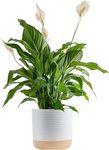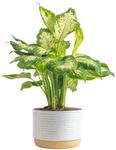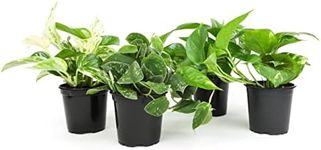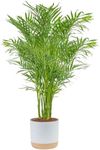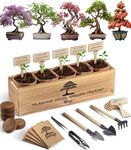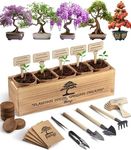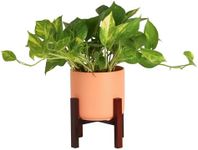Buying Guide for the Best Indoor Plants
Choosing the right indoor plant can greatly enhance your living space, improve air quality, and even boost your mood. When selecting an indoor plant, it's important to consider factors such as light requirements, maintenance level, size, and the plant's specific needs. Understanding these key specifications will help you find the perfect plant that fits your lifestyle and environment.Light RequirementsLight requirements refer to the amount of sunlight a plant needs to thrive. This is important because placing a plant in the wrong lighting conditions can hinder its growth or even cause it to die. Plants are generally categorized into low, medium, and high light requirements. Low light plants can survive in shaded areas or rooms with minimal natural light, making them ideal for offices or rooms with small windows. Medium light plants need indirect sunlight and do well in bright rooms but not in direct sunlight. High light plants require direct sunlight for several hours a day and are best placed near large windows or in sunrooms. To pick the right one, assess the natural light available in your space and choose a plant that matches those conditions.
Maintenance LevelMaintenance level refers to the amount of care and attention a plant needs. This is crucial because it determines how much time and effort you will need to invest in keeping the plant healthy. Plants can be low, medium, or high maintenance. Low maintenance plants are hardy and can tolerate neglect, making them perfect for busy individuals or beginners. Medium maintenance plants require regular watering and occasional pruning, suitable for those who can dedicate a bit more time to plant care. High maintenance plants need frequent attention, including specific watering schedules, humidity control, and regular fertilizing, ideal for experienced plant enthusiasts. Consider your availability and willingness to care for the plant when making your choice.
SizeSize refers to the physical dimensions of the plant, both in terms of height and spread. This is important because it affects where you can place the plant and how it fits into your space. Plants come in small, medium, and large sizes. Small plants are compact and can be placed on desks, shelves, or windowsills, making them great for small apartments or offices. Medium plants are larger and can be placed on the floor or larger surfaces, suitable for living rooms or bedrooms. Large plants can become focal points in a room and need ample space to grow, ideal for spacious areas like living rooms or hallways. Choose a size that complements your space and doesn't overcrowd it.
Watering NeedsWatering needs refer to how often and how much water a plant requires. This is important because improper watering can lead to root rot or dehydration, both of which can kill the plant. Plants can have low, moderate, or high watering needs. Low watering plants, such as succulents and cacti, need infrequent watering and are drought-tolerant, making them suitable for those who may forget to water regularly. Moderate watering plants need consistent moisture but should not be waterlogged, ideal for those who can maintain a regular watering schedule. High watering plants require frequent watering and high humidity, perfect for those who enjoy daily plant care routines. Consider your ability to maintain a watering schedule when selecting a plant.
Temperature and HumidityTemperature and humidity refer to the climate conditions that a plant needs to thrive. This is important because plants have specific temperature and humidity ranges that they can tolerate. Some plants prefer cooler temperatures and lower humidity, while others thrive in warm, humid environments. Plants that prefer cooler temperatures are suitable for homes with air conditioning or cooler climates. Plants that need warm and humid conditions are ideal for bathrooms or kitchens where humidity levels are naturally higher. Assess the typical temperature and humidity levels in your home and choose a plant that matches those conditions to ensure it thrives.
Growth RateGrowth rate refers to how quickly a plant grows. This is important because it affects how often you may need to repot the plant and how quickly it will fill the space. Plants can have slow, moderate, or fast growth rates. Slow-growing plants require less frequent repotting and are ideal for those who prefer a low-maintenance option. Moderate-growing plants strike a balance and are suitable for those who enjoy seeing gradual growth and can manage occasional repotting. Fast-growing plants need more frequent repotting and can quickly fill a space, perfect for those who want a lush, full look quickly. Consider how much time and effort you are willing to invest in repotting and managing growth when choosing a plant.
